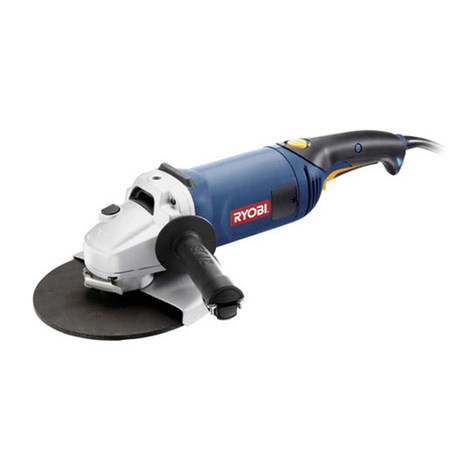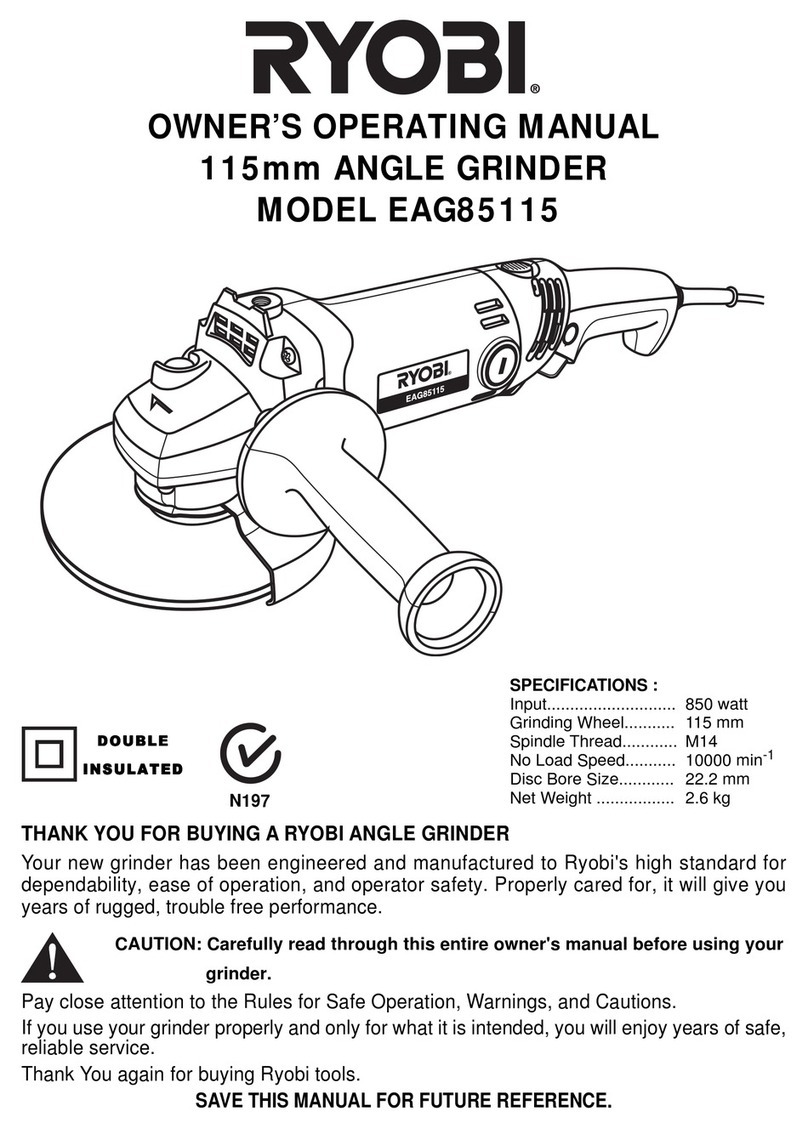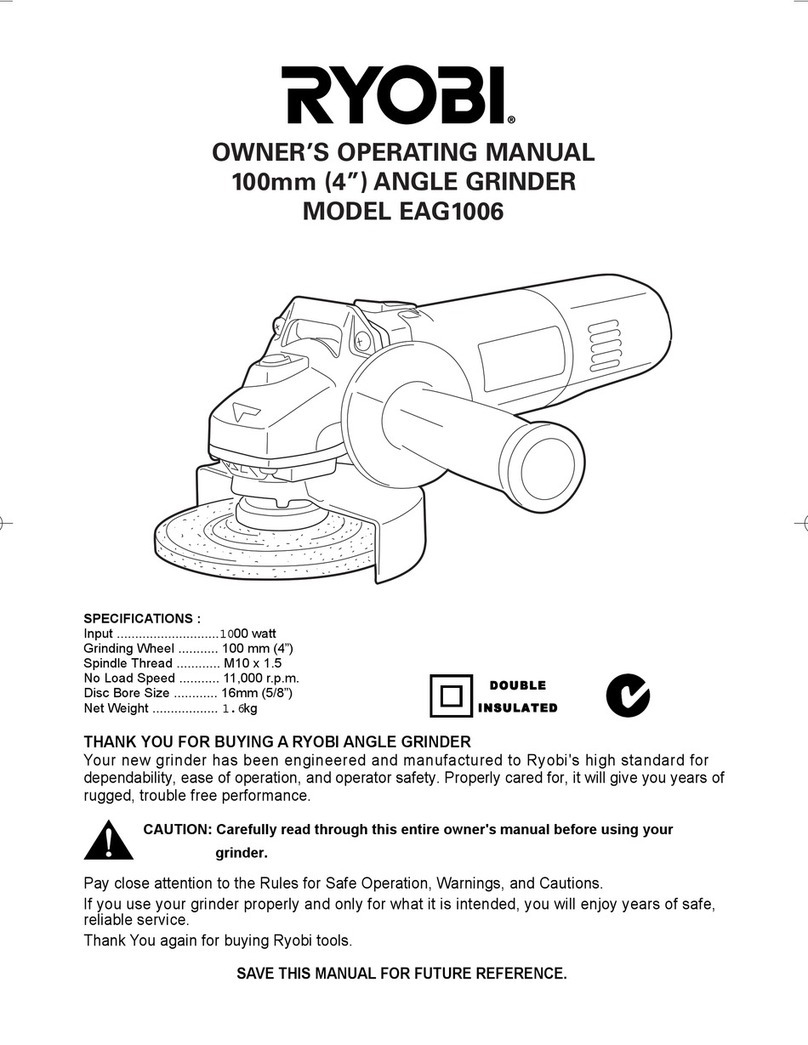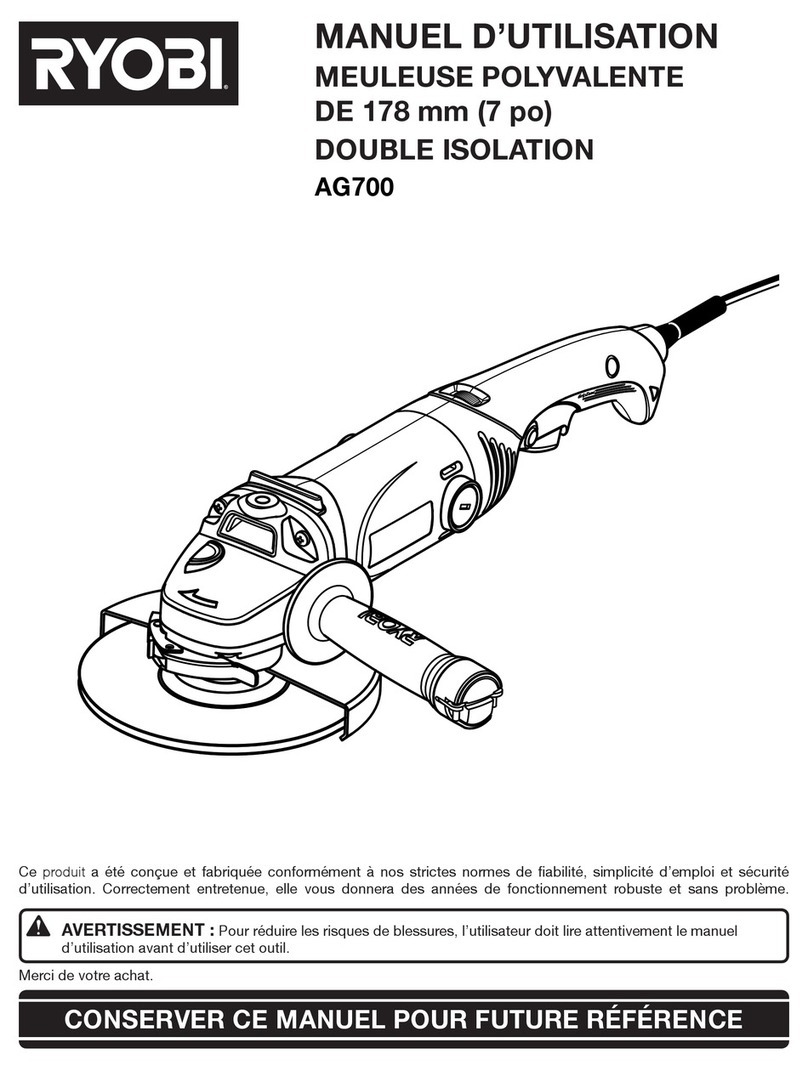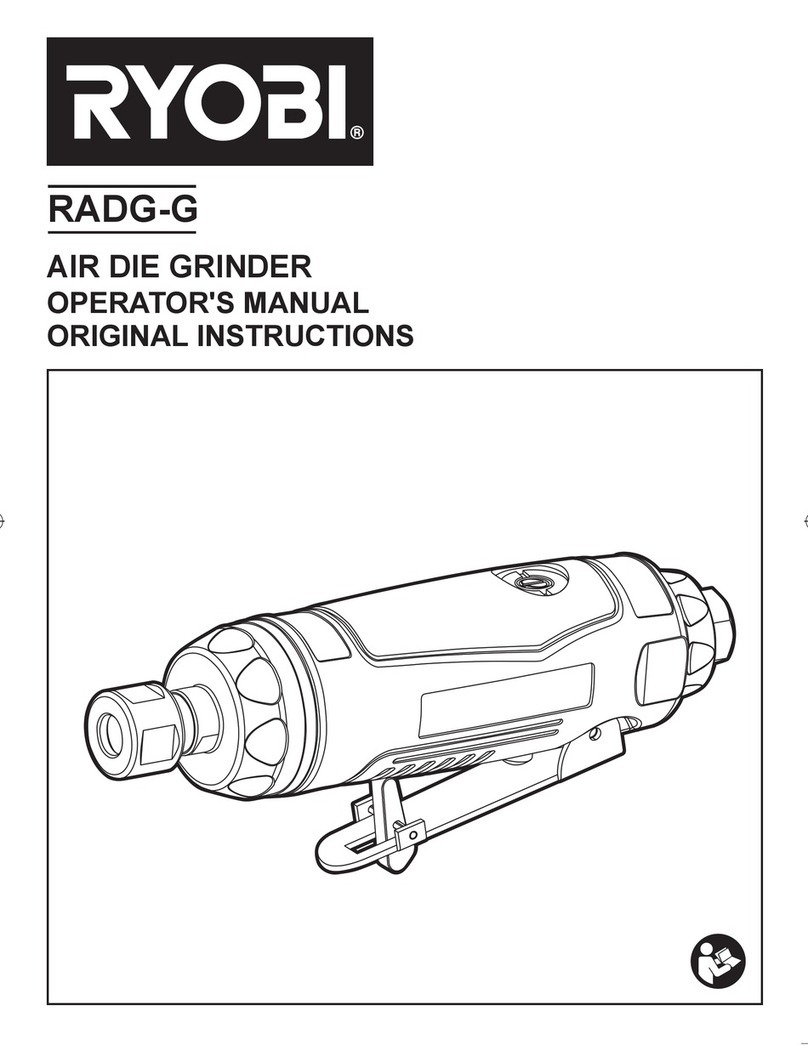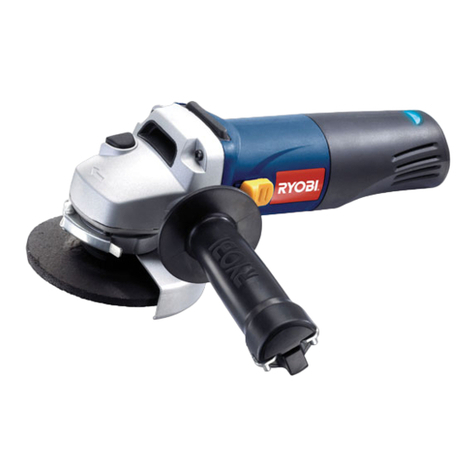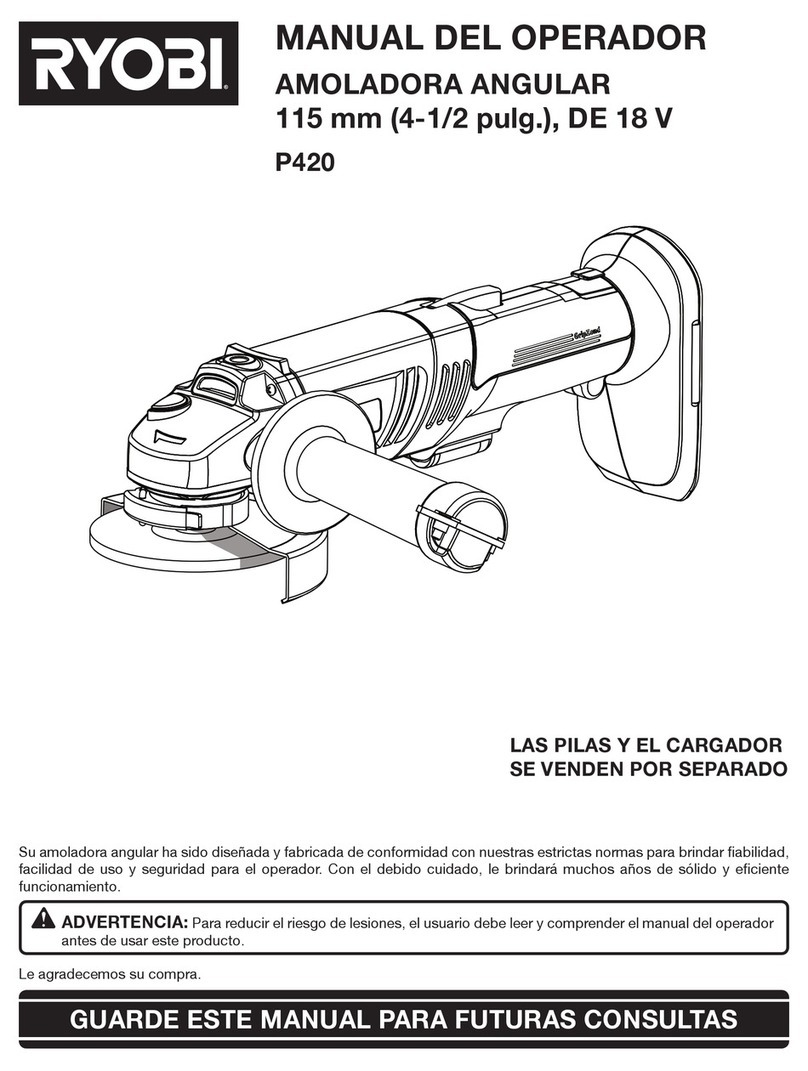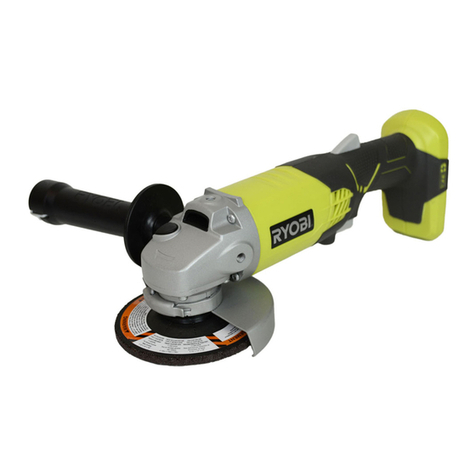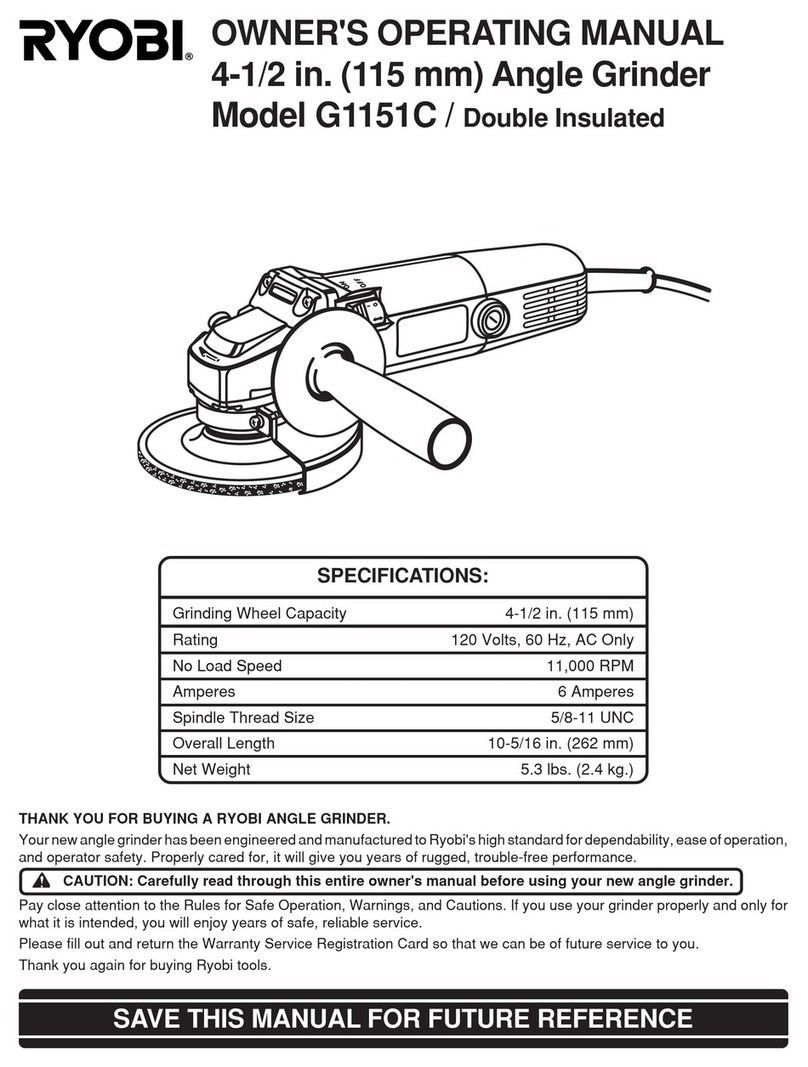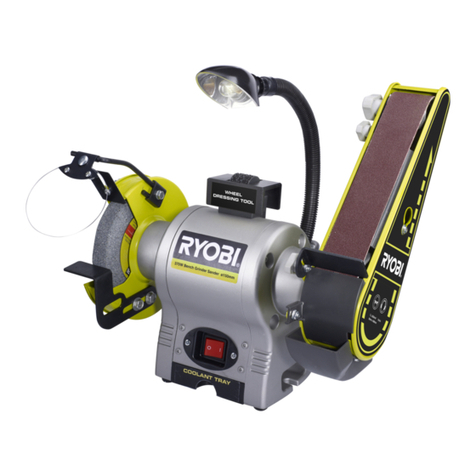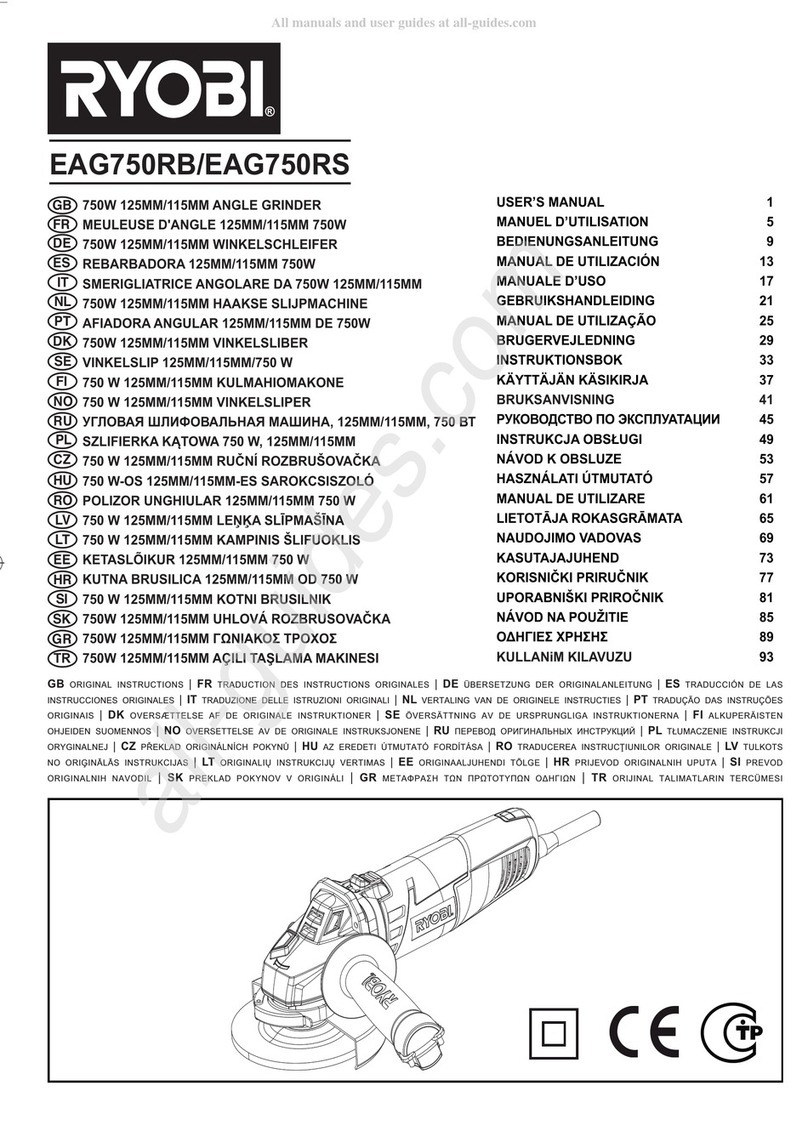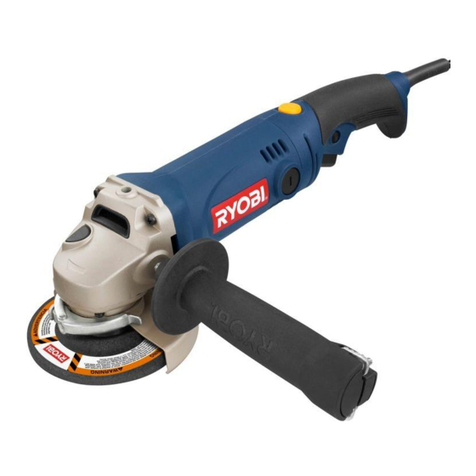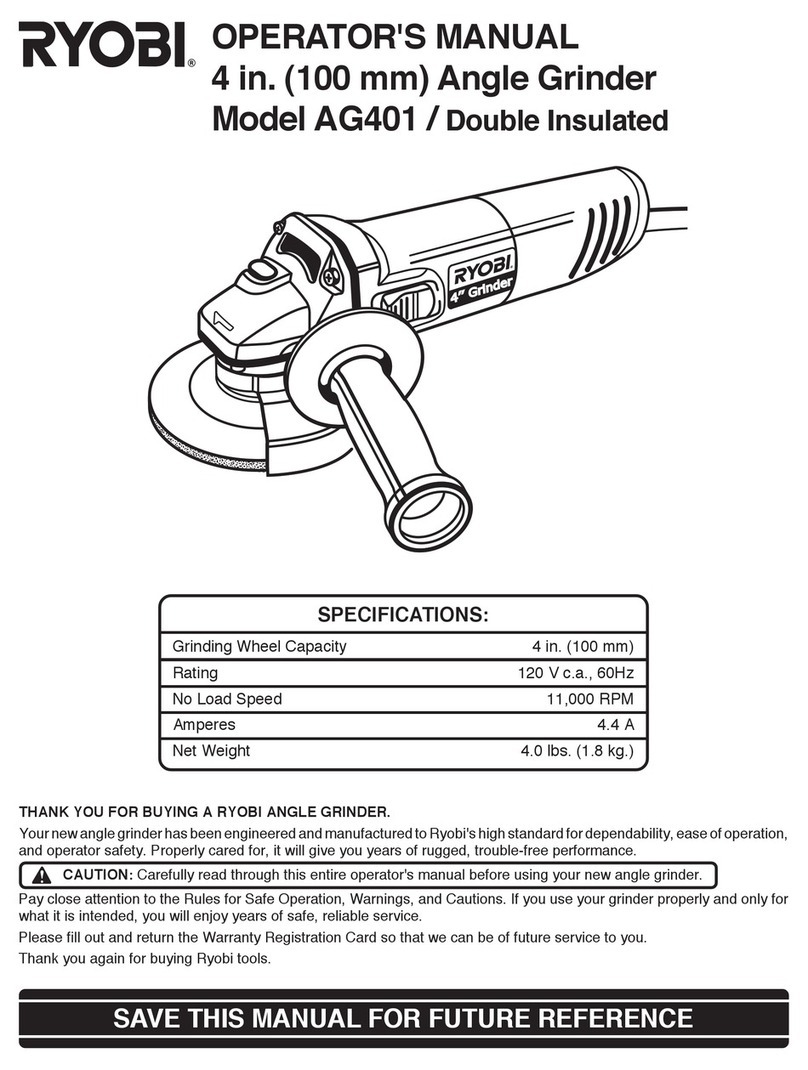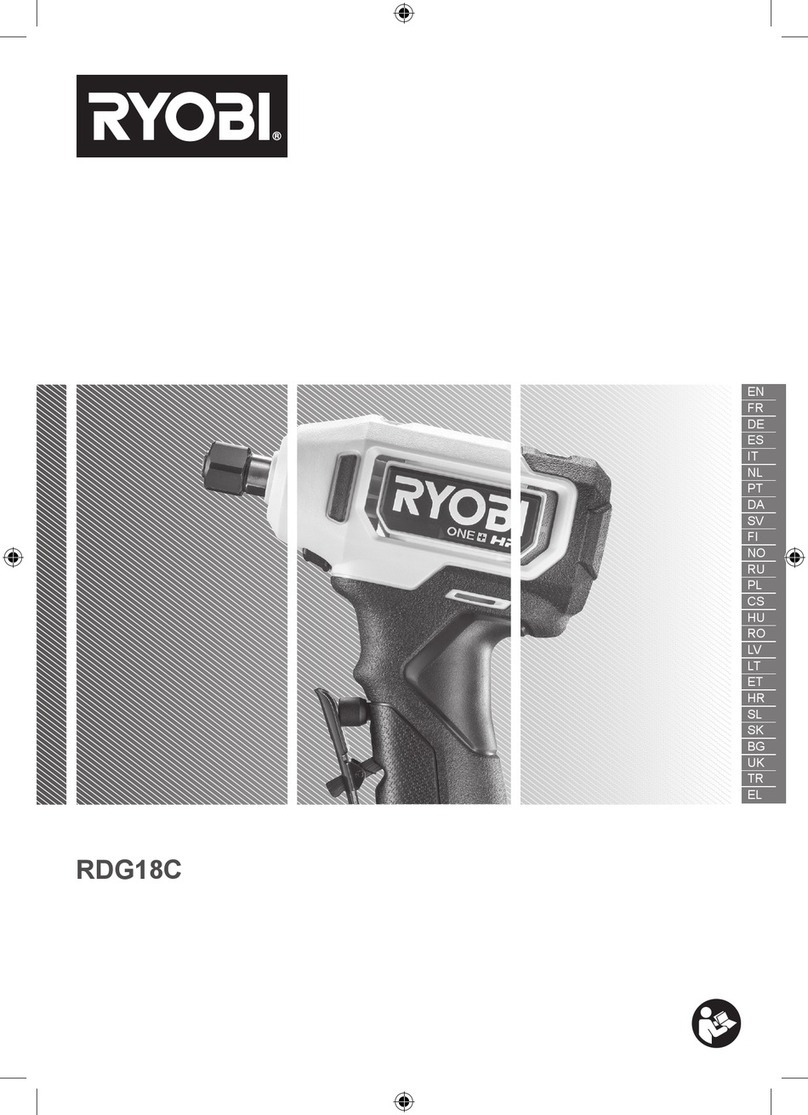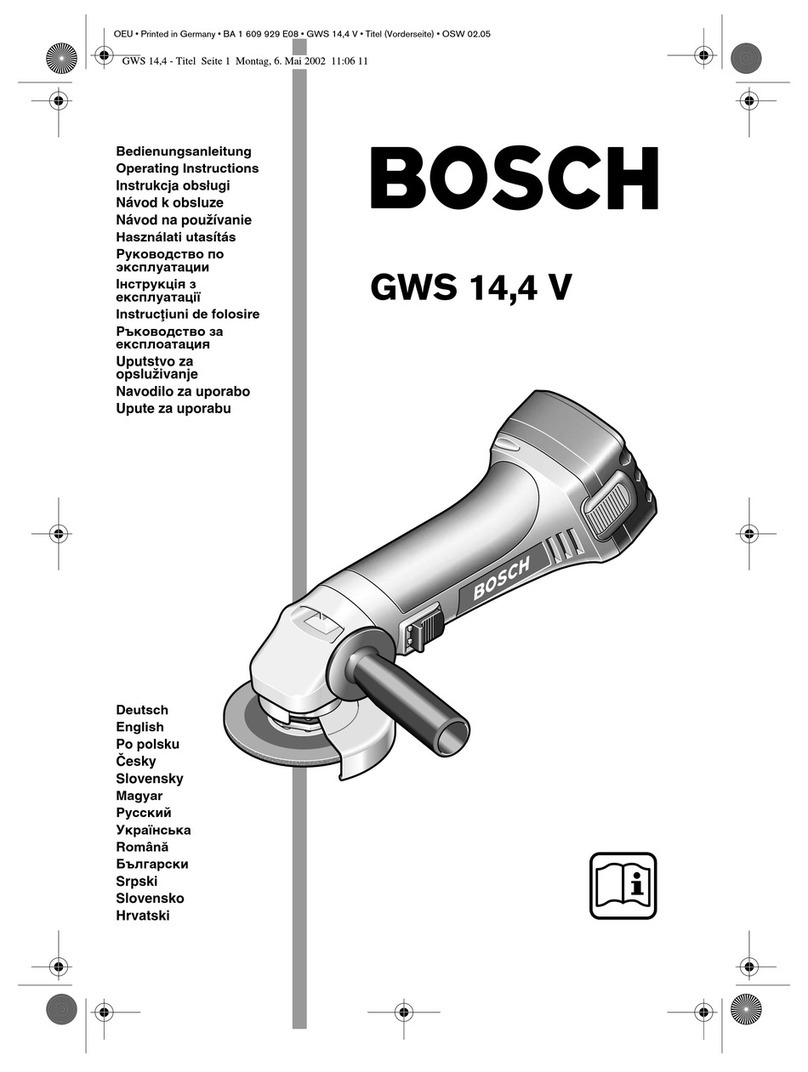
4
WARNING!
Some dust created by power sanding, sawing, grinding,
drilling, and other construction activities contains
chemicals known to cause cancer, birth defects or other
reproductive harm. Some examples of these chemicals
are:
• Lead from lead-based paints.
• Crystalline silica from bricks and cement and other
masonry products.
• Arsenic and chromium from chemicallytreated lumber.
Your risk from these exposures varies, depending on how
often you do this type of work. To reduce your exposure to
these chemicals: work in a well ventilated area, and work
with approved safety equipment, such as those dust masks
that are specially designed to filter out microscopic particles.
1. ALWAYS USE PROPER GUARD WITH GRINDING
WHEEL. A guard protects operator from broken wheel
fragments. When using grinding wheel attachments,
the guard must always be attached to the tool and
positioned for maximum safety, so the least amount of
wheel is exposed from the side the tool is being
operated.
2. ACCESSORIES MUST BE RATED FOR AT LEAST
THE SPEED RECOMMENDED ON THE TOOL
WARNING LABEL. Wheels and other accessories
running over rated speed can fly apart and cause
injury. Grinding wheels or any other accessory must
have a maximum safe operating speed greater than
the “no load speed” marked on the tool’s nameplate.
3. HOLD TOOL BY INSULATED GRIPPING
SURFACES WHEN PERFORMING AN OPERATION
WHERE THE CUTTING TOOLS MAY CONTACT
HIDDEN WIRING OR ITS OWN CORD. Contact with a
“live” wire will make exposed metal parts of the tool
“live” and shock the operator.
4. BEFORE USING A GRINDER OR INSTALLING A
NEW WHEEL, INSPECT THE GRINDING WHEEL
FOR CHIPS AND CRACKS. Remove bad wheels
immediately. Run the tool at no load for one minute,
holding the tool in the direction away from people.
Wheels with flaws will normally break apart during this
time.
5. CAREFULLY HANDLE BOTH THE TOOL AND
INDIVIDUAL GRINDING WHEELS TO AVOID
CHIPPING OR CRACKING. Install a new wheel if tool
is dropped while grinding. Do not use a wheel that may
be damaged. Fragments from a wheel that bursts
during operation will fly away at great velocity possibly
striking you or bystanders.
6. DO NOT USE GRINDING WHEEL THAT IS LARGER
THAN THE MAXIMUM RECOMMENDED SIZE FOR
YOUR TOOL, OR WORN DOWN DAMAGED
WHEELS FROM LARGER GRINDERS. Wheels
intended for large angle sander/grinders are not
suitable for the high speed of a small angle
sander/grinder, these wheels may easily burst and the
fragments strike you or bystanders.
7. DO NOT USE DEPRESSED HUB GRINDING
WHEELS FOR CUT-OFF OPERATIONS.
8. DO NOT USE THIS TOOL WITH “WOODCARVING”
BLADE. Such blades create frequent kick-back and
loss of control.
9. WEAR PROPER APPAREL WHILE USING A
SANDER/GRINDER. Face shield or at least safety
goggles, dust mask, leather gloves and shop apron
capable of stopping small wheel or workpiece
fragments.
10. POSITION THE CORD CLEAR OF THE SPINNING
GRINDING WHEEL OR ANY OTHER SANDING
ACCESSORY. Do not wrap the cord around your arm
or wrist. If you lose control and have the cord wrapped
around your arm or wrist it may entrap you and cause
injury.
11. AVOID BOUNCING AND SNAGGING THE WHEEL,
ESPECIALLY WHEN WORKING CORNERS, SHARP
EDGES ETC. This can cause loss of control and
kick-back.
12. REGULARILY CLEAN THE TOOL’S AIR VENTS BY
COMPRESSED AIR. Excessive accumulation of
powdered metal inside the motor housing may cause
electrical failures.
13. DO NOT GRIND OR SAND NEAR FLAMMABLE
MATERIALS. Sparks from the wheel could ignite these
materials.
14. THIS TOOL CAN BE CONVERTED TO A SANDER.
When grinding is resumed the proper guard and wheel
flanges MUST be reinstalled before proceeding with
grinding. The guard must always be attached to the
tool and positioned for maximum safety, so the least
amount of wheel is exposed from the side the tool is
being operated. The grinding wheel guard cannot be
used for most sanding operations or for wire brushing.
15. WHEN SANDING, DO NOT USE OVERSIZED
SANDING DISC. Larger sanding disc will extend
beyond the sanding pad causing snagging, tearing of
the disc or kick-back. Extra paper extending beyond
the sanding pad can also cause serious lacerations.
16. WHEN SANDING CHEMICALLY PRESSURE
TREATED LUMBER, PAINT THAT MAY BE LEAD
BASED, OR ANY OTHER MATERIALS THAT MAY
CONTAIN CARCINOGENS, USE SPECIAL
PRECAUTIONS. A suitable breathing respirator must
be worn by all personal entering the work area. Work
area should be sealed by plastic sheeting and persons
not protected should be kept out until work area is
thoroughly cleaned.
17. DIRECT THE DISCHARGE OF THE SPINNING WIRE
BRUSH AWAY FROM YOU. Small particles and tiny
wire fragments may be discharged at high velocity
during the “cleaning” action with these brushes and
may become imbedded in your skin.
ANGLE GRINDER SAFETY PRECAUTIONS

